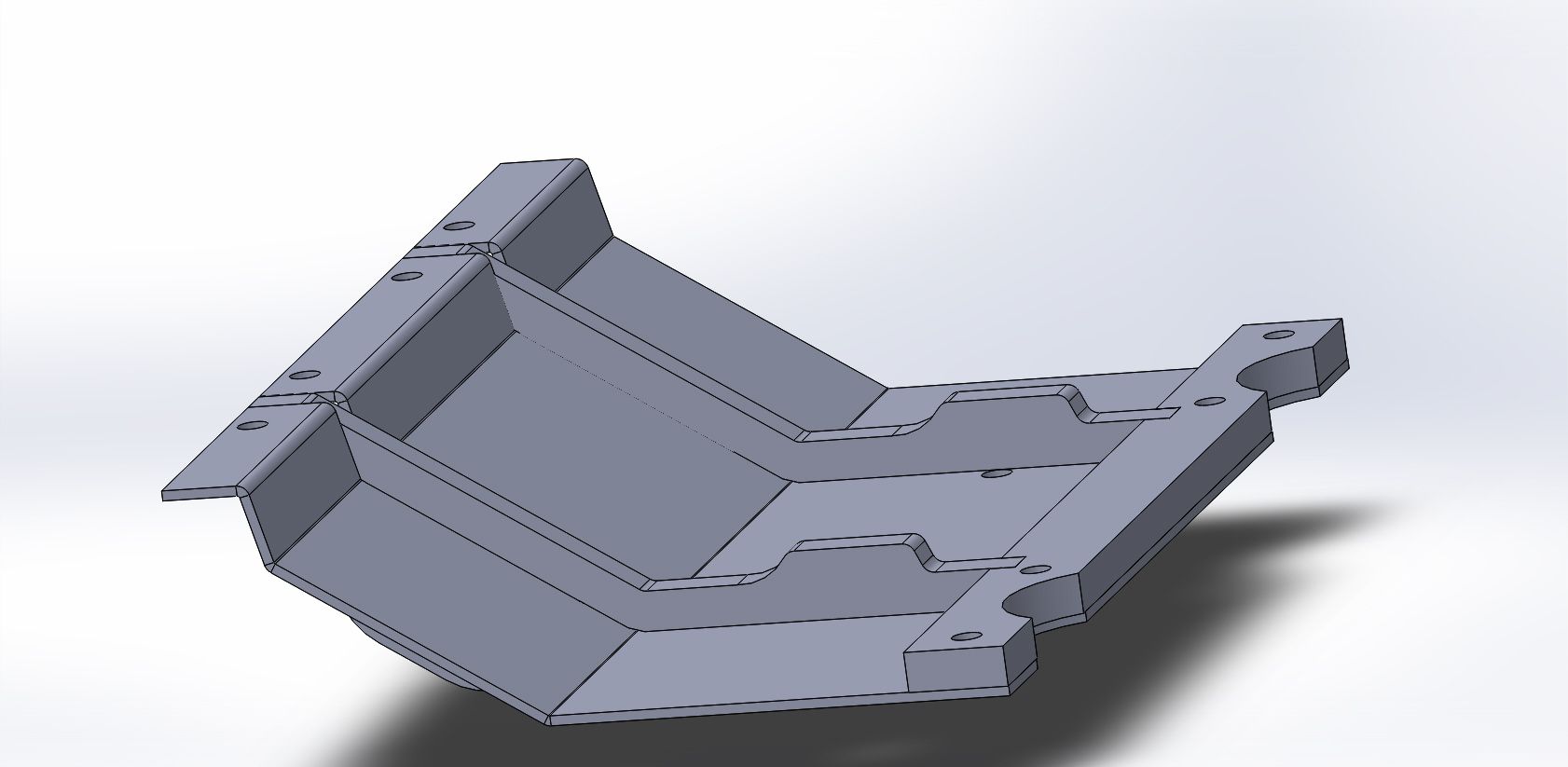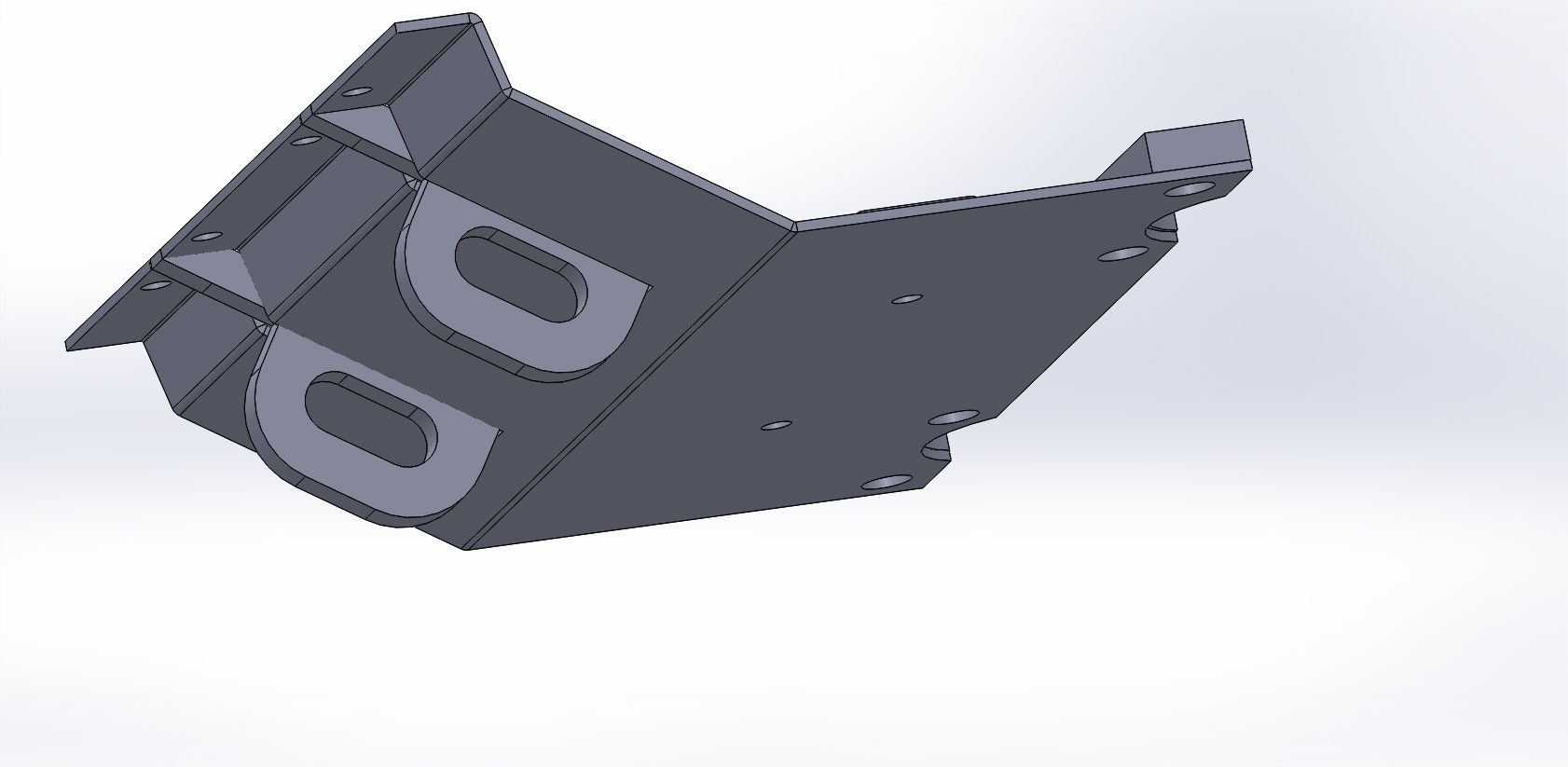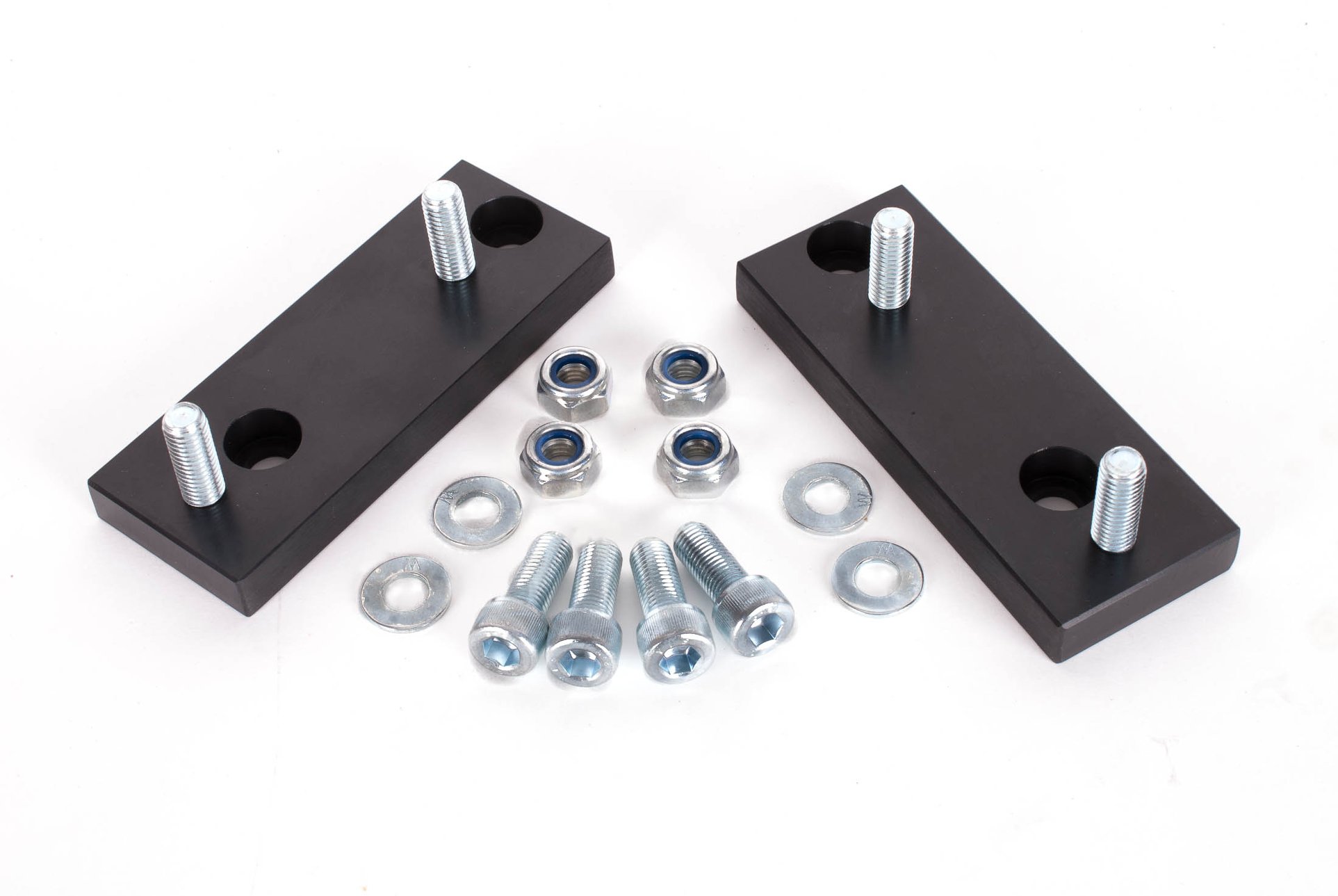Rods "Spaceship" Scratch built Plasma Cutter build
- rodw
-
 Topic Author
Topic Author
- Offline
- Platinum Member
-

Less
More
- Posts: 11544
- Thank you received: 3871
31 Jan 2019 07:29 #125374
by rodw
Replied by rodw on topic Rods "Spaceship" Scratch built Plasma Cutter build
Mike, no I don't. Its a basic 269 oz/in NEMA 23. I'm pretty aggressive with the microstepping at 20x so I've not noticed an issue.
Please Log in or Create an account to join the conversation.
- rodw
-
 Topic Author
Topic Author
- Offline
- Platinum Member
-

Less
More
- Posts: 11544
- Thank you received: 3871
31 Jan 2019 08:29 #125377
by rodw
John, yes, the original external offset documents stated that it worked like a jog wheel. I would like to try a limit3 on the pid output to the mesa stepgen. I see it has a smoothing option. I would also like to try averaging the torch voltage.
I think we can finally chalk this one up for Dewey as this is a bog standard eoffset_pid config except for the addition of torch voltage sampling after a timedelay of 1.5 seconds and the sampler enables the eoffset_pid component.
Replied by rodw on topic Rods "Spaceship" Scratch built Plasma Cutter build
Rod
Thanks, I am aware of the newer entries in the sparse at best motion documentation. I was hoping that one of the code wizards will look up in the code and confirm that EO works like the jogging input. I just don't know how to follow the changing variable names through the succession of files.
You can limit the actual EO counts but I think it will be more effective to use a limit2 or limit3 component depending on where it is placed. I know at least one implementation that uses three different fixed levels plus one user settable acceleration limits that are chosen depending on sheet thickness and cutting speed.
I think you are well within the sweet spot with your +/-2volt ripple using the TD equipment.
John
John, yes, the original external offset documents stated that it worked like a jog wheel. I would like to try a limit3 on the pid output to the mesa stepgen. I see it has a smoothing option. I would also like to try averaging the torch voltage.
I think we can finally chalk this one up for Dewey as this is a bog standard eoffset_pid config except for the addition of torch voltage sampling after a timedelay of 1.5 seconds and the sampler enables the eoffset_pid component.
Please Log in or Create an account to join the conversation.
- rodw
-
 Topic Author
Topic Author
- Offline
- Platinum Member
-

Less
More
- Posts: 11544
- Thank you received: 3871
31 Jan 2019 08:55 #125379
by rodw
I've never tried the THCAD 1:1 based on advice from PCW. I've only checked the movement of the stepper shaft visually but its probably consistent with the voltage. but I think it would be a good idea to plot Z axis position beside the torch voltage. I started with a P of about 10 today and kept pushing it up and adding more D so it got less nervous. There is no doubt that velocity and acceleration are key tuning parameters and Dewey did add a tuning window for them. There is now a system variable that tells if its a metric or imperial machine and Dewey now has set it up so it auto configures depending on metric or imperial. I had a friend with heaps of plasma experience turn up today just after I tuned it and he thought the cut quality was good. He did not think the Z axis shaft movement looked too bad.
So I've got a bit of tidying up to do now to get his back into my real config and remember how to use sheetcam. Quite exciting now. Great to finally get a result
Replied by rodw on topic Rods "Spaceship" Scratch built Plasma Cutter build
Rod
Yes, that was my experience with any lowpass filtering of the arc voltage, either digital or analog before the THCAD. I am thinking that the 6hz-7hz is way below any typical noise source so it must be related to something mechanical or in the plasma power supply. Have you tried the THCAD with a 1:1 output? If any thing noting any change may help pinpoint the source. Have you checked the error voltage at fixed height again after all the changes? Have you checked the actual distance the torch is moving while cutting under THC? Seeing the phase relationship between the error voltage/counts and the change in torch distance will give a clue which way to move with tuning the response. No matter what I did the voltage lagged the distance (commanded steps).
The eoffset PID component probably needs to be re tuned for each new set of output response limiting, especially the D term. I know Dewey put in some pins to make the imperial and metric scales close to reacting the same. I have no idea if it works correctly. I think your gains looks a little high. For the slope of my error volts to distance curve a P gain of 10 to 11 looks to be a good starting place, for some reason you are a factor of 10 greater than that. With your TD torch I would expect your gain numbers to be about twice mine if the imperial/metric compensation works correctly. Of course all this is out the window if you are good with your cut quality.
John
I've never tried the THCAD 1:1 based on advice from PCW. I've only checked the movement of the stepper shaft visually but its probably consistent with the voltage. but I think it would be a good idea to plot Z axis position beside the torch voltage. I started with a P of about 10 today and kept pushing it up and adding more D so it got less nervous. There is no doubt that velocity and acceleration are key tuning parameters and Dewey did add a tuning window for them. There is now a system variable that tells if its a metric or imperial machine and Dewey now has set it up so it auto configures depending on metric or imperial. I had a friend with heaps of plasma experience turn up today just after I tuned it and he thought the cut quality was good. He did not think the Z axis shaft movement looked too bad.
So I've got a bit of tidying up to do now to get his back into my real config and remember how to use sheetcam. Quite exciting now. Great to finally get a result
Please Log in or Create an account to join the conversation.
- Mike_Eitel
-

- Offline
- Platinum Member
-

Less
More
- Posts: 1052
- Thank you received: 183
31 Jan 2019 19:02 #125426
by Mike_Eitel
Replied by Mike_Eitel on topic Rods "Spaceship" Scratch built Plasma Cutter build
Hi Rod
I have no real reason, but I wonder if your mechanics have something like a resonancing frequency that could be triggered by fast moves. A long beam/portal (x or y) must have something like that. For a beam I would expect that to be max in the middle. I can imagine that such swing can change distance to table = voltage..
I write this as in business I start searching on the "wrong" places when I get strange "not as expected" results..
Mike
I have no real reason, but I wonder if your mechanics have something like a resonancing frequency that could be triggered by fast moves. A long beam/portal (x or y) must have something like that. For a beam I would expect that to be max in the middle. I can imagine that such swing can change distance to table = voltage..
I write this as in business I start searching on the "wrong" places when I get strange "not as expected" results..
Mike
Please Log in or Create an account to join the conversation.
- rodw
-
 Topic Author
Topic Author
- Offline
- Platinum Member
-

Less
More
- Posts: 11544
- Thank you received: 3871
31 Jan 2019 19:58 #125432
by rodw
I get it now. I thought you were talking about stepper resonance, not the machine resonating! I guess its possible the X axis gantry beam could flex but I think that would imply a different response at the end of the beam v's the centre and I have not experienced that. All of my test cutting has been across a 1100 mm wide piece of steel so it should have shown up. Basically, I've been cutting off 10mm wide strips of steel.
I know my 80mm x 40mm gantry beam is pretty light v's a slotted profile, but by the time I've attached 2 linear rails, a gear rack and a cable support tray made from an aluminium angle profile, there are a lot of stiffening ribs attached to it!
Replied by rodw on topic Rods "Spaceship" Scratch built Plasma Cutter build
Hi Rod
I have no real reason, but I wonder if your mechanics have something like a resonancing frequency that could be triggered by fast moves. A long beam/portal (x or y) must have something like that. For a beam I would expect that to be max in the middle. I can imagine that such swing can change distance to table = voltage..
I write this as in business I start searching on the "wrong" places when I get strange "not as expected" results..
Mike
I get it now. I thought you were talking about stepper resonance, not the machine resonating! I guess its possible the X axis gantry beam could flex but I think that would imply a different response at the end of the beam v's the centre and I have not experienced that. All of my test cutting has been across a 1100 mm wide piece of steel so it should have shown up. Basically, I've been cutting off 10mm wide strips of steel.
I know my 80mm x 40mm gantry beam is pretty light v's a slotted profile, but by the time I've attached 2 linear rails, a gear rack and a cable support tray made from an aluminium angle profile, there are a lot of stiffening ribs attached to it!
Please Log in or Create an account to join the conversation.
- Mike_Eitel
-

- Offline
- Platinum Member
-

Less
More
- Posts: 1052
- Thank you received: 183
31 Jan 2019 20:04 #125433
by Mike_Eitel
Replied by Mike_Eitel on topic Rods "Spaceship" Scratch built Plasma Cutter build
Yes, your judgment of middle behavior makes sense. It was just an idea. So good luck.
Please Log in or Create an account to join the conversation.
- Grotius
-

- Offline
- Platinum Member
-

Less
More
- Posts: 2419
- Thank you received: 2344
01 Feb 2019 20:33 #125492
by Grotius
Replied by Grotius on topic Rods "Spaceship" Scratch built Plasma Cutter build
Rod,
Sorry my mistake. I used the dynamic externall offset as a template. Today i programmed a oxyfuel machine with 2 oxyfuel floating head's with separate carrier's. So i had to take a look at the orginal externall offset files.
How is your progress with the THC?
I saw also the gain is important, it was issued before in this thread.
But multiple floating head's is no problem. In windows you cannot do this....
Sorry my mistake. I used the dynamic externall offset as a template. Today i programmed a oxyfuel machine with 2 oxyfuel floating head's with separate carrier's. So i had to take a look at the orginal externall offset files.
How is your progress with the THC?
I saw also the gain is important, it was issued before in this thread.
But multiple floating head's is no problem. In windows you cannot do this....
Please Log in or Create an account to join the conversation.
- rodw
-
 Topic Author
Topic Author
- Offline
- Platinum Member
-

Less
More
- Posts: 11544
- Thank you received: 3871
01 Feb 2019 21:30 #125498
by rodw
Replied by rodw on topic Rods "Spaceship" Scratch built Plasma Cutter build
Grotius, I have not done any more other than to do some programming to revise my component that reads the MESA THCAD torch voltage. I hope to have a play over the weekend as I have some prototype parts I want to cut for a product that has been really hard work designing in CAD. I thought it might be a good idea to roll up all of the voltage processing into one component so added a moving average feature to it. I posted the averaging code on Phill's thread, but here it is again
Andy says there is an easier way to approximate the result but this was fun to program. Once you understand how pointers are being used in this example you shall be the top of your C class! Hint, we are using a circular buffer so the oldest sample will be the one in front of the position we are at now.
I want to use this moving average to set a base line for kerf crossing sensing. I will try using it as the torch voltage signal as well.
I still have to migrate my experiments back into my main plasma config so I can use my sheetcam postprocessor which is quite different to the axis experiments. I was hoping I could get that done this weekend, but I have a lot of other stuff to get done.
Warning: Spoiler!
#define BUFSIZE 1000 // maximum number of readings to average torch volts
double buf[BUFSIZE];
float avgarcvolts(double tvolts, int iscutting, int buffersize)
{
// Calculates the moving average of buffersize readings
static double *b, *p = &buf[0]; // pointers for beginning of buffer and current position
static double *e = &buf[buffersize]; // pointer for end of buffer
static int wascutting = 0; // cutting state last time
static double sumvolts = 0.0; // Sum of readings in buffer
static int numreadings = 0; // number of readings in buffer
if(!iscutting && wascutting){
// Torch just turned off, so reset the variables
p = b;
sumvolts = 0.0;
numreadings = 0;
wascutting = iscutting; //and save the state
return(0.0);
}
if(iscutting){ // Arc_OK is on so lets start gathering data to average
*p++ = tvolts; // Save volts to the buffer and increment pointer
if(numreadings < buffersize)
numreadings++;
if(p > e) // if we've gone past the end of the buffer, wrap to the beginning
p = b;
sumvolts += tvolts; // add the new reading
if(numreadings >= buffersize)
sumvolts -= *p; // subtract the oldest reading (which is this one)
}
wascutting = iscutting; //and save the state
if(numreadings)
return(sumvolts/(double)numreadings); // return Average volts
else
return (0.0); // catch divide by zero errors
}Andy says there is an easier way to approximate the result but this was fun to program. Once you understand how pointers are being used in this example you shall be the top of your C class! Hint, we are using a circular buffer so the oldest sample will be the one in front of the position we are at now.
I want to use this moving average to set a base line for kerf crossing sensing. I will try using it as the torch voltage signal as well.
I still have to migrate my experiments back into my main plasma config so I can use my sheetcam postprocessor which is quite different to the axis experiments. I was hoping I could get that done this weekend, but I have a lot of other stuff to get done.
Please Log in or Create an account to join the conversation.
- Grotius
-

- Offline
- Platinum Member
-

Less
More
- Posts: 2419
- Thank you received: 2344
01 Feb 2019 21:46 #125502
by Grotius
Replied by Grotius on topic Rods "Spaceship" Scratch built Plasma Cutter build
Rod,
I want to give you a reminder.
When i added a secondairy floating head today. It was connected in 3 lines of hal code.
Maybe you must try my config. It's mesa pre configured.
I want to give you a reminder.
When i added a secondairy floating head today. It was connected in 3 lines of hal code.
Maybe you must try my config. It's mesa pre configured.
Please Log in or Create an account to join the conversation.
- rodw
-
 Topic Author
Topic Author
- Offline
- Platinum Member
-

Less
More
- Posts: 11544
- Thank you received: 3871
01 Feb 2019 22:13 #125503
by rodw
Replied by rodw on topic Rods "Spaceship" Scratch built Plasma Cutter build
Yes, I would be interested in trying your config now we are using the same plasma hardware. Feel free to email me.
I'm really at the stage the experiments need to stop for a while so I can cut some parts. It won't take long to copy my eoffset settings across to my config but it predates the latest eoffset example that includes a LIB hal file to make all of the connections and simplifies configuration. It would be good to revise my config to use the current standard as it will be easier to maintain long term.
This one is holding me up. A bash plate for a 4WD that makes more room for a relocated swaybar
I've already made the swaybar relocators and had the aluminium anodised. This was cut on a CNC mill by my neighbour.
I'm not very good with sheetmetal designs.
I'm really at the stage the experiments need to stop for a while so I can cut some parts. It won't take long to copy my eoffset settings across to my config but it predates the latest eoffset example that includes a LIB hal file to make all of the connections and simplifies configuration. It would be good to revise my config to use the current standard as it will be easier to maintain long term.
This one is holding me up. A bash plate for a 4WD that makes more room for a relocated swaybar
I've already made the swaybar relocators and had the aluminium anodised. This was cut on a CNC mill by my neighbour.
I'm not very good with sheetmetal designs.
Attachments:
Please Log in or Create an account to join the conversation.
Time to create page: 1.093 seconds



